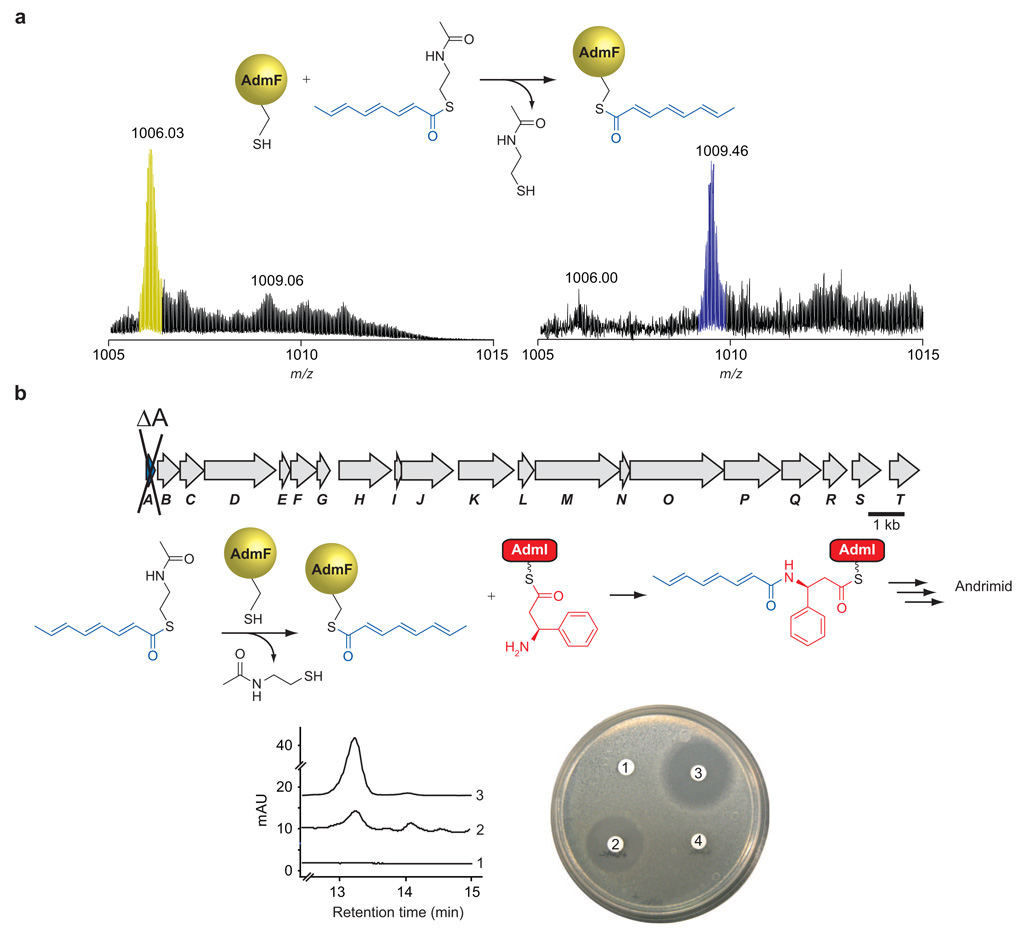Figure 6.
AdmF accepts octatrienoyl-S-NAC as surrogate substrate. a) FT mass spectra of the free AdmF (yellow) using the octatrienoyl-S-NAC as substrate, leading to the formation of acylated-AdmF (blue). b) Octatrienoyl-S-NAC feeding of E. coli host cells expressing the admA gene knockout of the andrimid biosynthetic cluster. Liquid cultures of the cells mentioned above were grown in the presence of 200 µM octatrienoyl-S-NAC and incubated at 30 °C for 24 h. The resulting liquid medium was extracted with ethyl acetate and submitted to preparative HPLC (see Methods). Cells that were not fed the octatrienoyl-S-NAC did not produce any andrimid, as illustrated by the absence of a clearing zone of the bioassay plate and absence of a peak on the corresponding HPLC trace (see no. 1). Cells that were fed the octatrienoyl-S-NAC produced both antibiotic activity and a peak that coeluted with an authentic andrimid standard (see HPLC traces and bioassays 2 and 3, respectively). Notably, the octatrienoyl-S-NAC did not possess any apparent antibiotic activity (bioassay 4).

